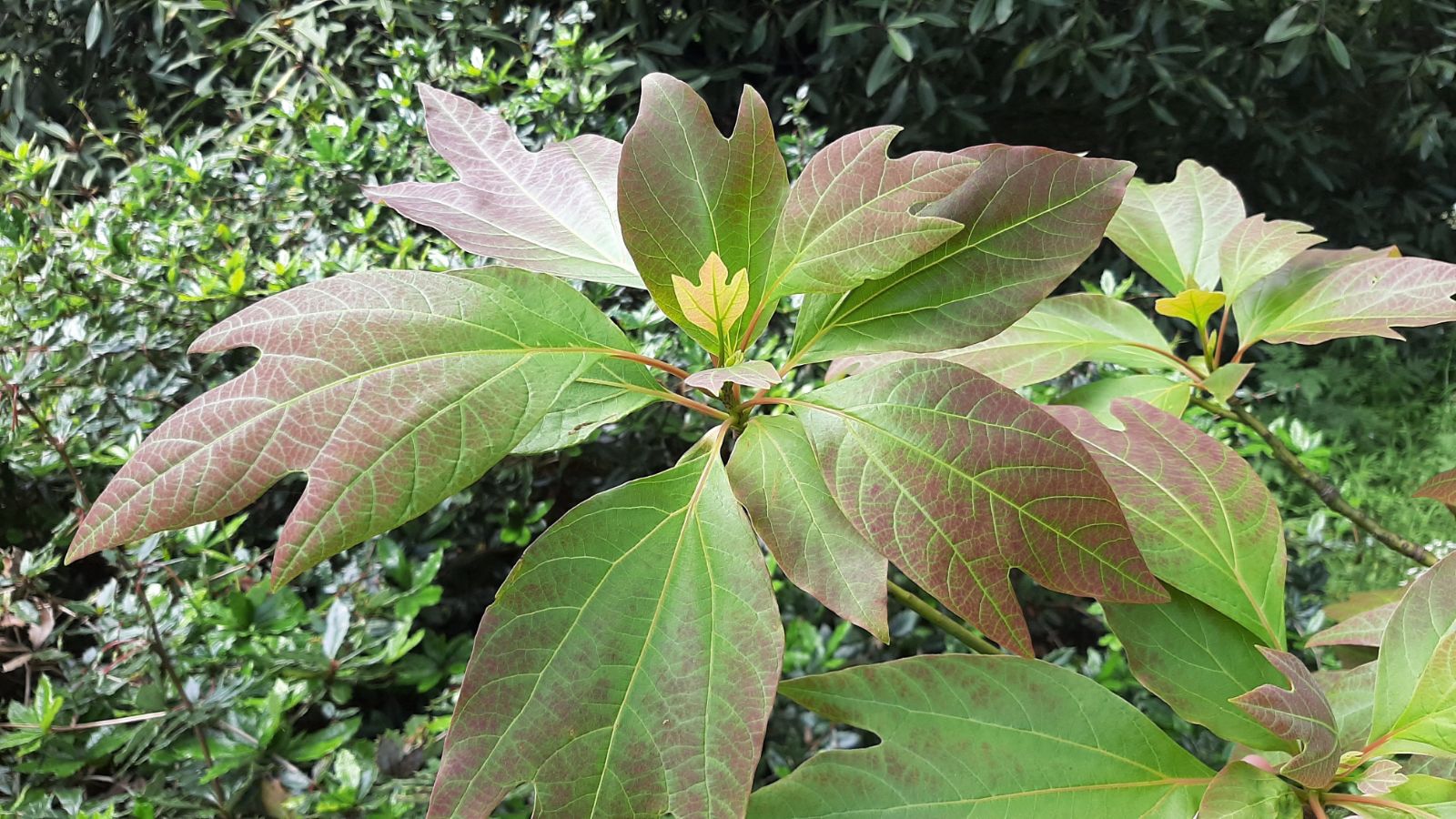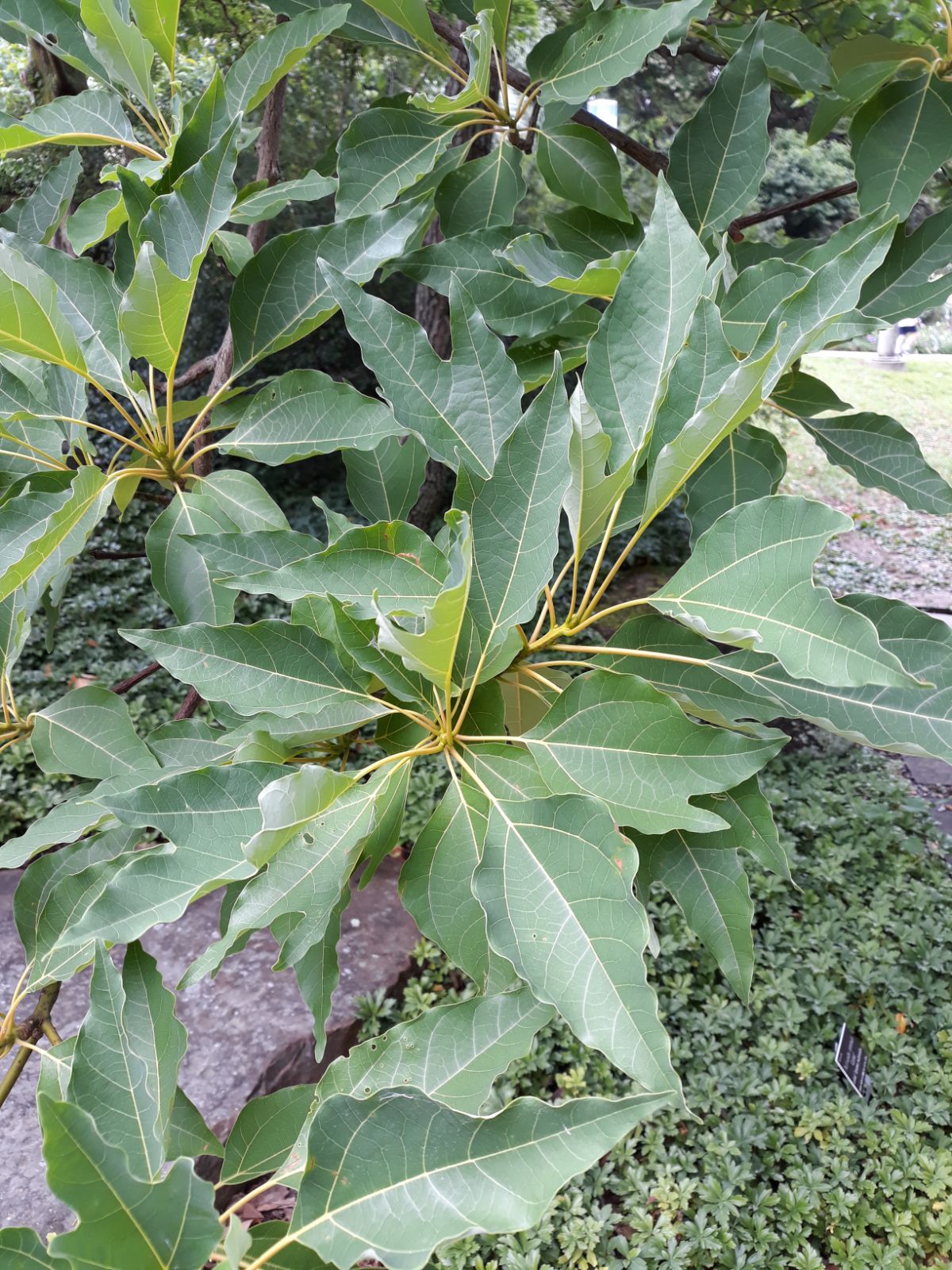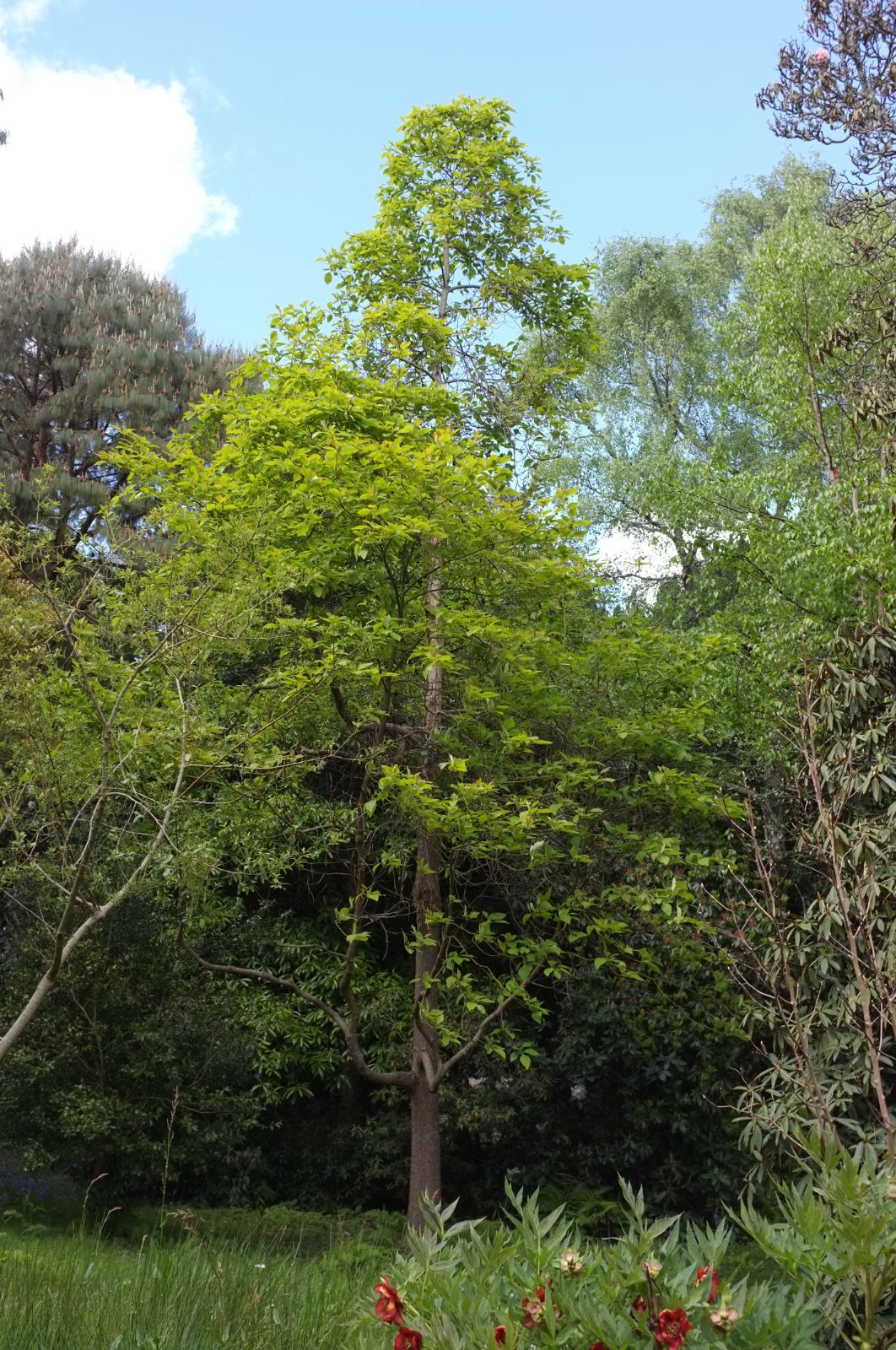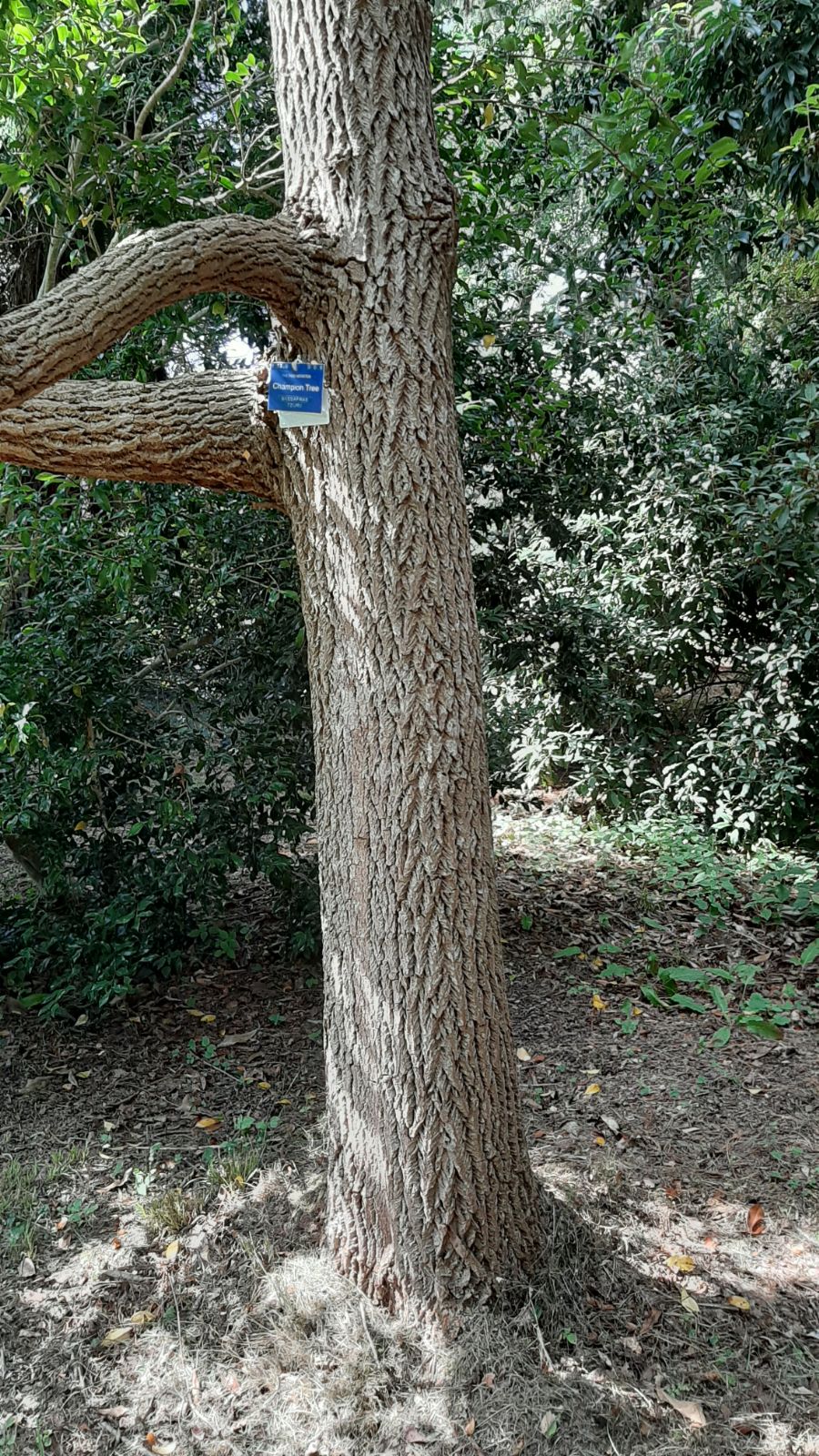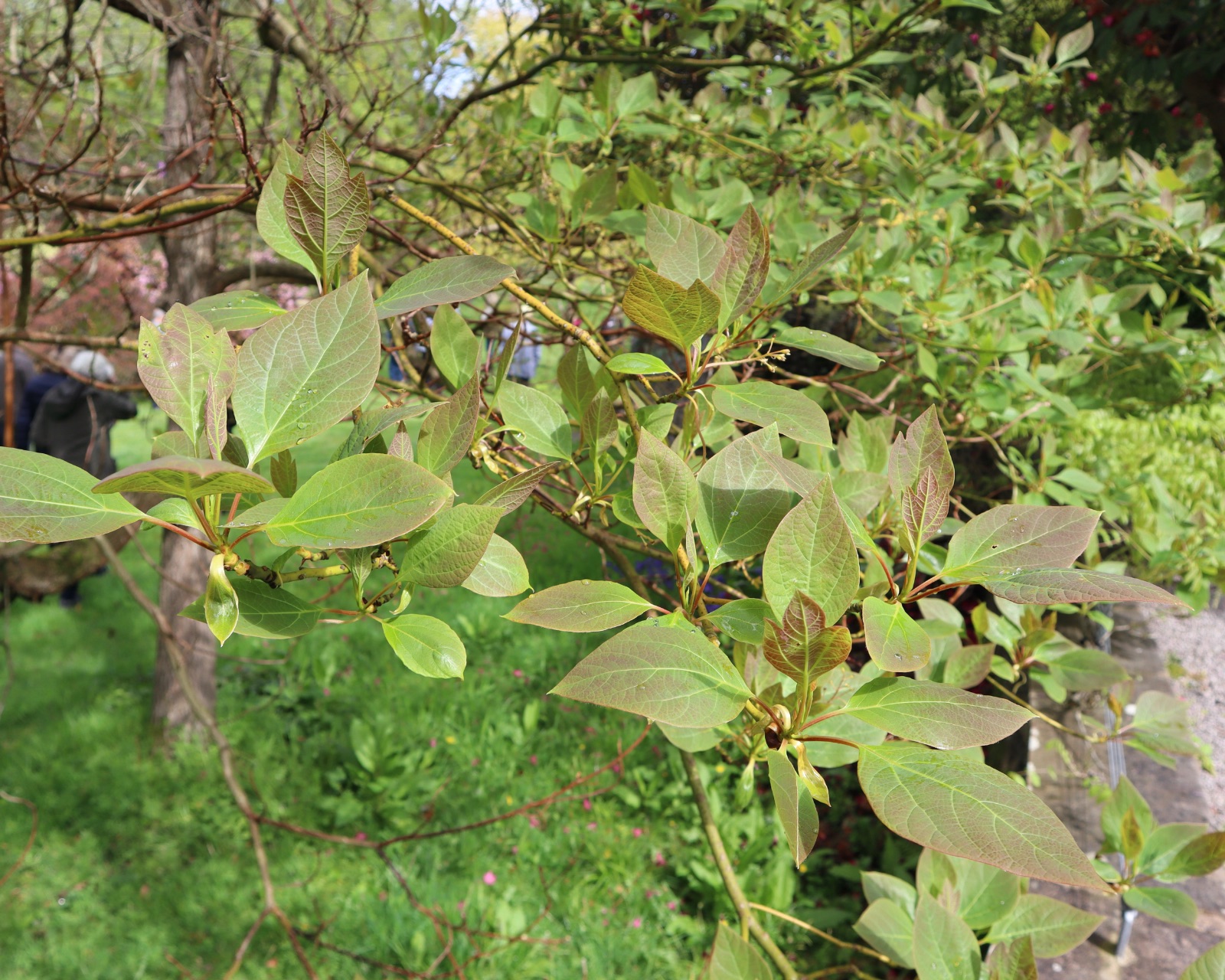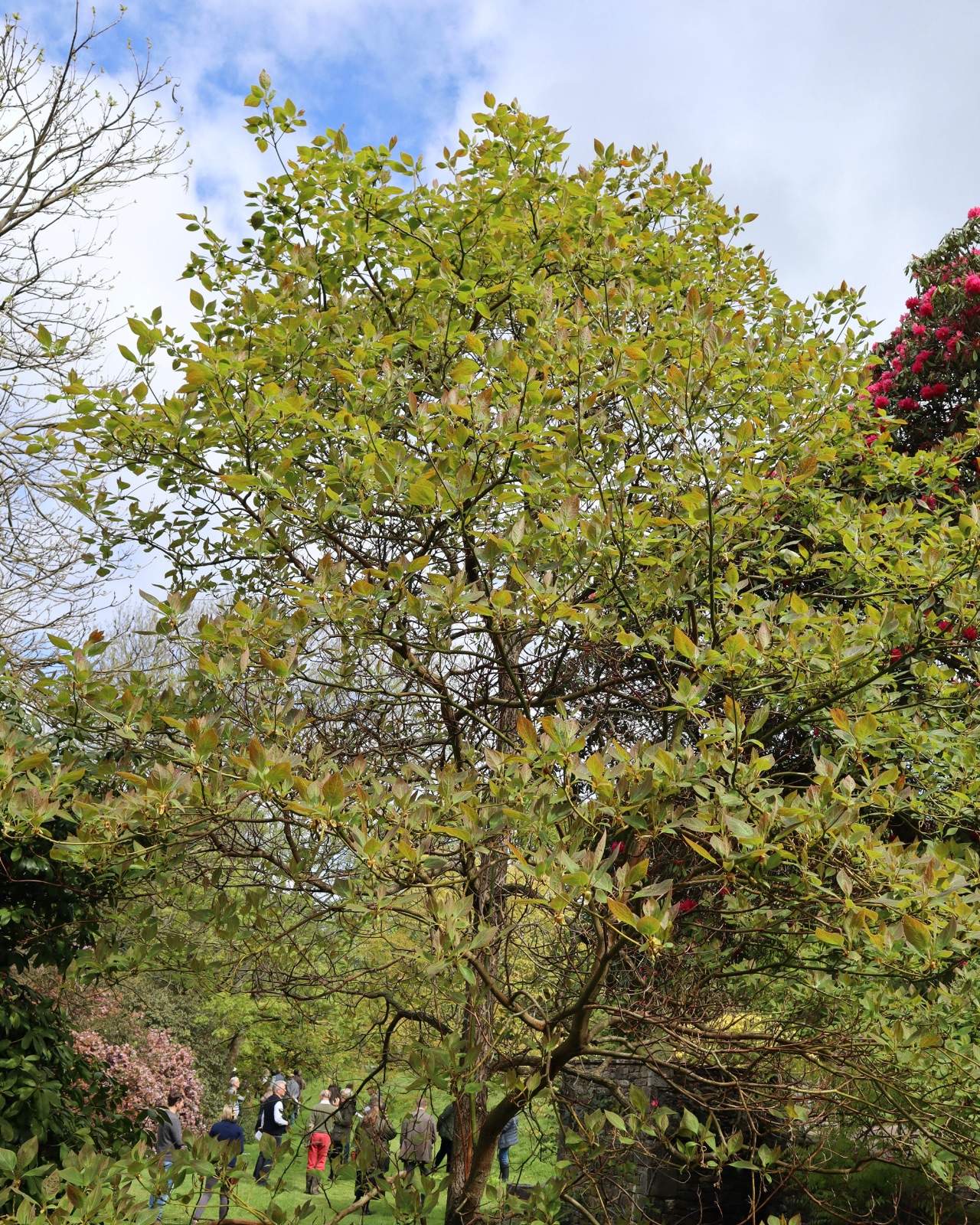Sassafras tzumu
Sponsor
Kindly sponsored by
Peter Hoffmann
Credits
New article for Trees and Shrubs Online.
Recommended citation
'Sassafras tzumu' from the website Trees and Shrubs Online (treesandshrubsonline.
Genus
S. tzumu (Hemsl.) Hemsl. – It is a Chinese tree, introduced from Hupeh to the Coombe Wood nursery by Wilson in 1900; a tree which grew at Kew was the only one known to me. As compared with the American species, it has certain small differences in the structure of the flower, the shoots and leaves are glabrous, and it is remarkably distinct in growth. The original tree at Coombe Wood made enormous, succulent, erect growths every year, perhaps 6 or 7 ft long, with proportionately large leaves. These shoots were very much cut back in winter, but a woody trunk was gradually being formed, and a tree with age might become quite acclimatised. Leaves with the principal veins reddish; young wood purple-spotted. The specific name is founded on the native one (“tzu-mu”). According to Henry, who discovered it, the tree grows 50 ft high, and its timber is valued by the mountaineers where it is wild.

